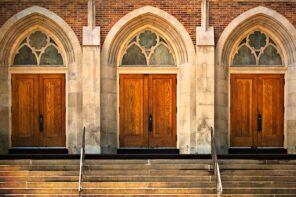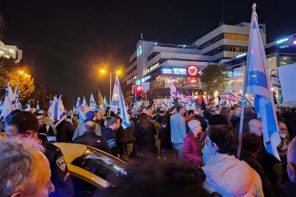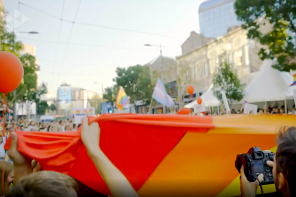Last week I took an urgent phone call from my brother who was seething about the pope’s visit with Kim Davis. A gay man who refuses to vacate his Roman Catholic pew, Robby’s Facebook post on the topic read: “The Pope went to see Kim Davis to ask for forgiveness for his part in the history of bigotry that formed her messed up beliefs that got her ass thrown in jail.”
I get where he is coming from. But to me, the most important thing about the papal visit was not the agenda he upheld, but the stance he held up.
At the National Shrine of the Immaculate Conception on September 23, those of us in attendance were reminded, via loudspeaker, that the Roman Catholic Church has made and continues to make mistakes. “Saints are only human,” a voice proclaimed during a pre-Mass program that acknowledged the objections of Native Americans to the canonization of Junipero Serra, the first Hispanic saint. “All the church’s saints are sinners,” the voice said. “That is the point.”
In a scene from Dante’s Purgatorio, massive crowds inched through security checkpoints beneath a blazing sun. Gates opened at ten in the morning and closed at 2pm—but mass would not start until after 4pm. Children in Catholic school uniforms held their parents’ hands. A host of chatty young nuns tucked iPhones into the pockets of their steely gray habits. Absolutely no protest signs were allowed, yet church groups with people who spoke Spanish sported bright T-shirts with slogans about immigration reform.
On line I heard that parishes with large numbers of undocumented immigrants had received many tickets. No outside food or water, statues, gifts or selfie sticks were permitted. Despite 10,000 folding chairs, most of us would have no choice but to stand.
Once in my appointed place behind the last row of seats, I found myself in a community of fellow pilgrims, lottery winners from local parishes, nearby colleges, and, like me, Catholic University alumnae. Admitted by chance, several told me they felt summoned by faith. Together we watched a figure we imagined was Papa Francesco censing the altar, and I thought, “Holy smokes. I could be the only Protestant here.”
I left the church decades ago when I felt unwelcome as an unmarried single mother. Catholic University had offered little support. Now a seminarian seeking ordination as a Reformed Christian minister, this was the first time I had returned in more than 30 years.
Speaking only in Spanish, the pope’s homily touched upon the damage native people suffered through the system of missions that Junipero Serra help found. “The Church, the holy People of God, treads the dust-laden paths of history, so often traversed by conflict, injustice and violence, in order to encounter her children, our brothers and sisters,” reads the English transcript. Yet the pope upheld Serra’s courage to move forward. “The holy and faithful People of God are not afraid of losing their way; they are afraid of becoming self-enclosed, frozen into élites, clinging to their own security. They know that self-enclosure is the cause of so much apathy.” It was not an apology. On the other hand, Francis did not sweep violence under the rug. We must get over it, he seemed to say, because ignoring the damage we cause hurts everyone.
A flock of white-cassocked priests bearing wafers were released in our midst. An assistant who carried a yellow-and-white umbrella accompanied each. The missalette sternly warned against taking communion across denominational borders. I instant-messaged someone in my denomination to find out the status of communion between Reformed churches like mine and the Catholic church. “Don’t ask, don’t tell,” he kindly replied. “Wish I were there.”
I turned to a Georgetown University undergrad named Rebecca standing next to me. Out of thousands of students who entered a lottery, she had received one of 80 tickets. As the only entrant she knew who was a practicing Catholic, she felt a divine hand played a role in her presence. “You study anthropology and history,” I said. “How do you feel about canonizing Junipero Serra?”
“For me, this is all so amazing,” Rebecca confessed. “I grew up in California. And I am a descendant of the Mescalero Apache tribe. I’ve visited many missions. I love the one in Carmel. In school all children study mission history. Everyone does a history project to build a model of a mission. I cannot believe Junipero Serra is being sainted by Pope Francis and I am a witness.”
I was stunned. As much as anyone present, Rebecca had a right to be angry with the holy father. Instead she was full of reverence. It occurred to me that perhaps the real power of the people’s pope is not to change the world with any particular agenda with its winners and losers. Instead this papal visit offered people like me who felt hurt by the church a chance to lay down our anger and forgive. Not for the sake of those who perpetrate injustice and violence—Father Serra, for all the good he did and evil he allowed, is long dead. Rebecca helped me remember the grace of forgiveness for the living people who suffer harm.
So in the afterglow or aftermath of Francis’ historic visit, the most important take-away may be the old sinner in the white cap who captured so many eyes and hearts here in the US—who reminded us that like him, the church itself is only human.




